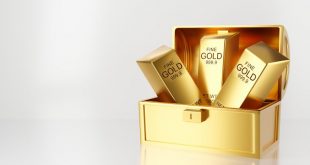The US economy is showing signs of resilience, with lower inflation seen by shoppers. However, the Federal Reserve’s target interest rate of 2% remains high, and consumers expect inflation to remain high over the coming months but fall in the years ahead to levels closer to those experienced before the pandemic.
As the first half of the year came to an end, the US experienced a tech-driven stock market surge rather than the recession that most analysts had projected. The federal debt ceiling conflict and a potential banking crisis were resolved, and OpenAI sparked a gold rush in artificial intelligence and a corresponding existential crisis.
Additionally, markets for housing and jobs fared better than anticipated. General Electric, which hit the financial skids shortly after its relocation to Boston, seems to be back on track. Inflation remains too hot for the Federal Reserve to begin reducing borrowing costs, and a range of indicators, from manufacturing to consumer spending, signal that growth is waning.
The story of the first half was inflation, specifically the frustratingly slow progress made on getting it back to the Federal Reserve’s 2% target despite sharply higher interest rates intended to restrain increases in consumer prices. The Fed’s preferred inflation gauge, the personal consumption expenditure index excluding food and energy, has barely budged this year, running at about 4.6%.
Fed officials see inflation ending the year at 3.9%, which is why they intend to boost rates again and keep them elevated at least into 2024. Steeper borrowing costs on credit card balances, mortgages, and business loans have tamped down demand and helped lower inflation, but there’s “a long way to go.” Inflation is causing a slowdown in gross domestic product (GDP), the broadest measure of the economy.
GDP expanded at a 2% annual rate in the first three months of the year, down from 2.6 percent in the fourth quarter. GDP for the second quarter will not be released until the end of July, but forecasters predict that growth will slow even more. Economic activity is expected to stall in the third quarter and shrink slightly in the final three months of the year before rebounding in 2024.
If the forecasts are accurate, the downturn would be less severe than many past recessions, as the job market has remained solid. High inflation and interest rates combined with a looming recession are not the recipe for a stock market run-up.
However, the Standard & Poor’s 500 index climbed 16% in the first half and 24% from its October low, and the tech-heavy Nasdaq soared 32% from the start of the year, its best first half since the 1980s. Home economics have been impacted by the Fed’s rate hikes, with local sales of single-family homes and condominiums off by almost 25%.
 Noor Trends News, Technical Analysis, Educational Tools and Recommendations
Noor Trends News, Technical Analysis, Educational Tools and Recommendations





